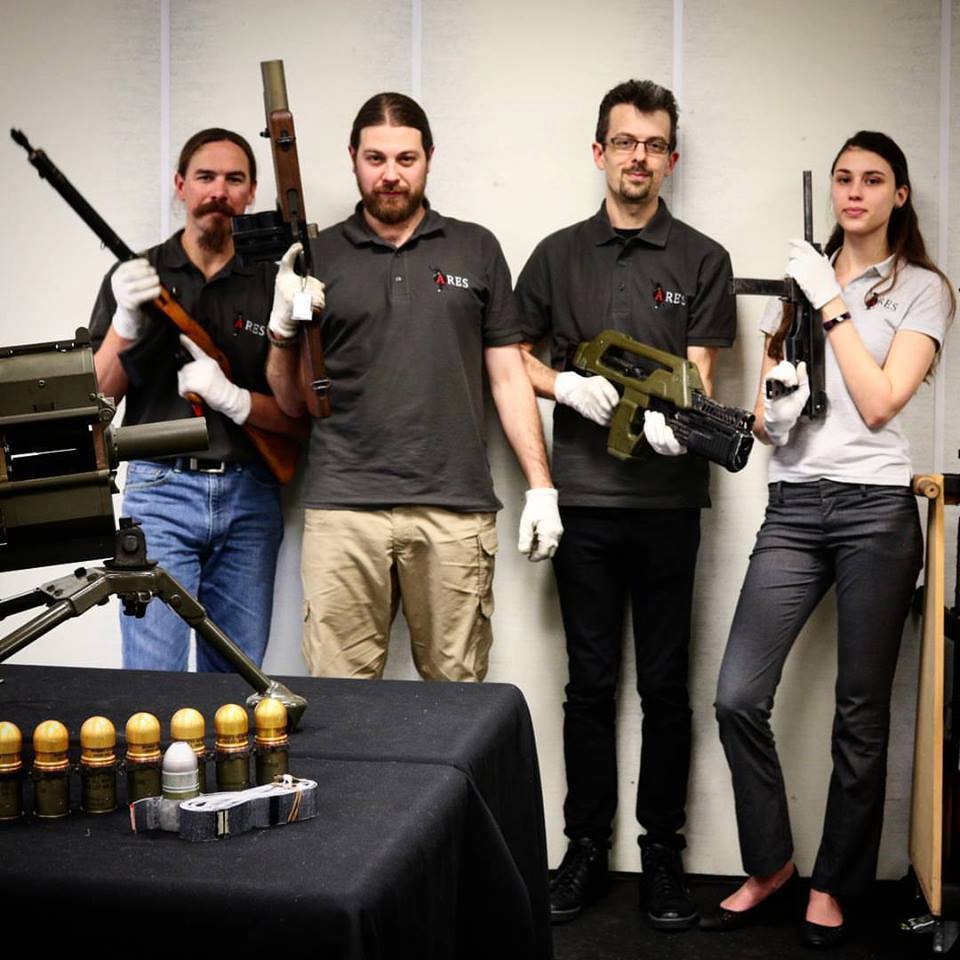Ian McCollum, a Researcher with ARES and the Editor of Forgotten Weapons, recently interviewed ARES Director N.R. Jenzen-Jones. They discussed a wide range of topics addressing the adoption, stockpiling, use, and proliferation of (primarily) modern arms and munitions, both in the hands of states and non-state actors.
This interview supports an ongoing series of videos produced collaboratively by ARES and Forgotten Weapons. Using access to unique collections facilitated by ARES, this series of videos is examining a range of interesting weapons over the coming months. Each video is accompanied by a blog post, here on The Hoplite, and supported by high quality reference photographs. See, for example, our series on the SA80 and our series on E.M. weapons.
Some of the topics discussed include:
1:15 – Russian cartridge development similar to Mk318, Mk262, or M855A1?
2:25 – Small arms vs heavy weapons in the illicit arms trade.
5:13 – How do insurgents deal with ammunition supply? Old ammo? Obsolete cartridges?
9:05 – The container of Sturmgewehrs in Syria
11:36 – Why the move back towards .308 caliber rifles?
14:16 – What is the most interesting or surprising thing you have found in a conflict zone?
15:58 – What weapon system would you put on a technical?
17:22 – Do militias and insurgents try to standardize on weapon systems?
21:20 – Are locally produced arms affective or just hazardous to the users?
22:15 – Purpose in anti-mine treaties for small nations far from conflict zones?
23:18 – Popularity of rifle grenades
25:03 – Future of UK-based small arms production?
(ARES post on launch of Small Arms Survey paper on self-loading rifle production and history)
27:39 – NATO replacement of 5.56mm with something else?
(ARES post on launch of Small Arms Survey paper on emergent ammunition technologies)
33:25 – What guns are the bad guys using?
38:02 – Is the man-portable antitank weapon changing the role of the main battle tank?
40:03 – Modern anti-armor systems, like the Russian T14 Armata
40:50 – Improvements in small arms and optics in Afghanistan, and are they a maintenance burden?
44:46 – How does the US firearms market impact worldwide arms trade?
47:41 – Interesting non-technical development in the small arms trade?
48:55 – North Korean AK88 helical drum magazine
51:14 – Future potential for careless ammunition
52:58 – Developments in de-mining and ordnance disposal

Most of the ARES small arms and light weapons (SALW) team at the Royal Armouries in Leeds, England, pose with some interesting guns. Ian is holding a SIG AK 53 self-loading rifle, Nic is holding a T148E1 grenade launcher, Jonathan is holding an ‘M41A pulse rifle’, and Chloe is holding a craft-produced sub-machine gun manufactured by P.A. Luty. On the table is a MK 18 Mod 0 grenade launcher.
Remember, all arms and munitions are dangerous. Treat all firearms as if they are loaded, and all munitions as if they are live, until you have personally confirmed otherwise. If you do not have specialist knowledge, never assume that arms or munitions are safe to handle until they have been inspected by a subject matter specialist. You should not approach, handle, move, operate, or modify arms and munitions unless explicitly trained to do so. If you encounter any unexploded ordnance (UXO) or explosive remnants of war (ERW), always remember the ‘ARMS’ acronym:
AVOID the area
RECORD all relevant information
MARK the area from a safe distance to warn others
SEEK assistance from the relevant authorities


2 thoughts on “Forgotten Weapons interviews ARES Director N.R. Jenzen-Jones”